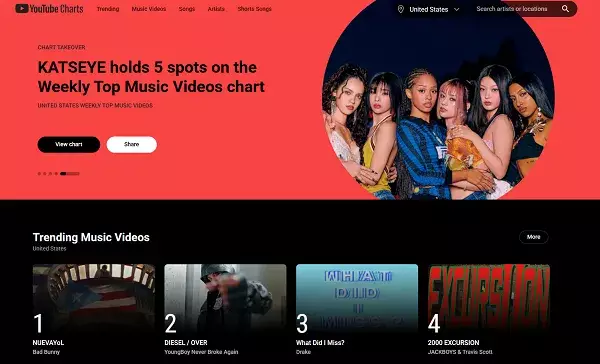In recent times, YouTube has announced a significant overhaul to its content discovery interface, signaling a deeper commitment to personalized, niche-driven content presentation. By removing traditional “Trending” and “Trending Now” lists, and replacing them with more granular, category-specific charts, YouTube aims to adapt to the evolving landscape of online viewer behavior. This move is far more than a superficial UI update; it reflects a fundamental reorientation of how audiences explore and engage with content on the platform. Instead of a broad, one-size-fits-all trending page designed to showcase viral videos, YouTube is leaning into its vast diversity of micro-communities and subcultures, recognizing that what “trends” today is no longer a singular entity but a complex web of interests.
This strategic decision appears to be rooted in a critical analysis of user engagement patterns. The traditional Trending page, once a hub for viral videos capturing mass attention, has seen declining visits, as YouTube itself admits. This decline highlights an important truth about modern digital consumption: users are increasingly motivated by personalized feeds that cater to specific interests rather than general trend summaries. YouTube’s acknowledgment of the shifting landscape underscores a keener understanding of its audience’s behavior, emphasizing targeted engagement over broad-brush trending displays.
The Power of Niche and Category-Specific Charts
Replacing broad trending lists with detailed category charts symbolizes a more refined approach to content curation. Instead of a single list of viral videos that attempts to satisfy all viewers simultaneously, YouTube now provides tailored charts for genres such as music, podcasts, and trailers. This shift promotes a more organic discovery process, aligning with how users actually consume content — browsing based on specific interests and tastes. For creators, this offers a golden opportunity to position their content within well-defined niches, fostering community growth and loyalty.
Notably, this focus on categories could serve to democratize visibility, allowing lesser-known creators to shine within their respective communities. In the age of algorithms optimized for user retention, niche charts could provide more equitable exposure opportunities, differing from the traditional, often monopolized trending sections dominated by mainstream viral videos. This granular approach, while potentially fragmenting the platform’s overall “viral” culture into smaller micro-trends, arguably creates a more sustainable and varied content ecosystem. It encourages content creators to hone their craft within specific subgenres, fostering innovation and diversity — qualities that the old trending lists rarely rewarded.
Implications for Discovery and Viewer Behavior
YouTube’s emphasis on personalization and algorithmic recommendations complements this new discovery model, directing viewers towards content closely aligned with their interests. Rather than relying on trend alerts or broad lists that might misalign with individual preferences, the platform now subtly guides users through tailored suggestions within categories they actively explore. This potentially leads to deeper engagement within niche communities where creators can develop loyal audiences rather than fleeting viral hits.
However, the disappearance of prominently featured trending lists could also have unintended consequences. For new or casual viewers, this might reduce the initial impulse to discover fresh content outside their usual interests, possibly leading to a more insular viewing experience. Yet, given that YouTube’s recommendation engine is already sophisticated enough to surface relevant videos based on viewing habits, the need for generic trending lists has diminished. The core challenge remains balancing personalized discovery with serendipitous exploration — a task YouTube seems to be addressing by maintaining explore sections and subscriptions alongside tailored charts.
The Future of Engagement in a Fragmented Content Landscape
While some may see this transformation as a risk to the dynamic “viral” culture that often fuels platform growth, it arguably aligns more closely with sustainable viewer engagement. When content discovery is driven by genuine interest rather than transient trends, users are more likely to stay longer, discover new creators, and return consistently. This shift shifts the platform’s focus from fleeting viral moments to building enriching, community-based content ecosystems.
Moreover, the continued emphasis on niche categories could redefine what it means to be “popular” on YouTube. Success may no longer be solely measured by trending status but by the depth of engagement within specific verticals. Content creators who understand this change will adapt, creating targeted content that resonates authentically with smaller but dedicated audiences. For YouTube itself, this evolution underlines an understanding that the future of digital content is rooted in diversity, specialization, and meaningful connections rather than superficial viral fame.


Leave a Reply